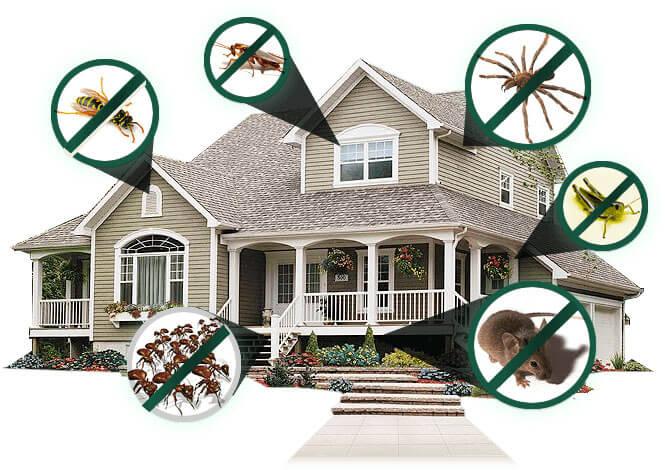Specialist A1 Charlotte Bed Bug Exterminator - High Quality Service Assured
Specialist A1 Charlotte Bed Bug Exterminator - High Quality Service Assured
Blog Article
Bed Insect Therapy Break Down: Contrasting Chemical Vs. Non-Chemical Solutions
In the world of bug control, specifically when dealing with the consistent issue of bed pests, the option between chemical and non-chemical treatment options can be a critical one. Both methods offer distinct benefits and disadvantages, influencing aspects such as efficiency, safety and security factors to consider, and total expense. By taking a look at the nuanced information of each method, a more clear understanding of which path to pursue in attending to a bed bug invasion can be obtained.
Performance of Chemical Therapies
Chemical therapies for bed insect invasions have been widely recognized for their powerful and fast efficiency in eliminating these pests. When taking into consideration the performance of chemical therapies, it is critical to recognize that they can give a thorough and quick option to a bed bug problem.
Additionally, chemical treatments have the advantage of offering residual impacts, indicating that they can continue to get rid of bed pests even after the initial application. This residual activity is particularly advantageous in combating any type of possible re-infestations. Furthermore, the quick activity of chemical treatments can bring alleviation to people encountering extreme bed insect problems, permitting them to gain back control of their space promptly.
Security Interest In Chemical Solutions
One essential element that needs careful factor to consider when making use of chemical options for bed bug therapy is guaranteeing the security of occupants and the setting. Exposure to certain chemicals used in bed bug treatments can lead to respiratory system issues, skin irritability, or various other negative responses, especially in people with pre-existing problems or sensitivities.
In addition, the environmental effect of chemical remedies is an additional significant consideration. Some chemicals used in bed insect treatments may be dangerous to advantageous bugs, wildlife, and ecosystems if they seep right into the soil or water supply. It is necessary to use chemical treatments judiciously, following safety and security guidelines, and considering less poisonous options to alleviate these risks and make certain the effective and secure administration of bed insect invasions.
Advantages of Non-Chemical Strategies
Taking into consideration the potential safety and security concerns and ecological effect related to chemical options for bed bug treatment, exploring non-chemical approaches offers an encouraging option with numerous unique benefits. Non-chemical methods provide a much safer choice for homes, particularly those with individuals, family pets, or youngsters delicate to extreme chemicals. These techniques eliminate the risks of exposure to harmful substances, minimizing the potential for adverse health effects. In addition, non-chemical therapies are eco-friendly, as they do not add to air or water contamination, making them a lasting choice for pest control.
In addition, non-chemical services can be efficient in targeting bed pests, consisting of hard-to-reach areas where chemical treatments might not penetrate - A1 bed bug exterminator charlotte. Approaches such as heat treatment, vacuuming, steam cleansing, and cushion encasements provide extensive elimination without the usage of harmful chemicals.
Limitations of Non-Chemical Treatments

In addition, non-chemical treatments commonly need multiple applications to accomplish effective elimination. visit This can be time-consuming and may not constantly ensure total removal of all bed bugs and their eggs, particularly in hard-to-reach or hidden areas.
Furthermore, the success of non-chemical therapies greatly depends on appropriate implementation and thoroughness, which can be challenging for individuals without expert knowledge. Inadequate application of non-chemical approaches may lead to insufficient elimination, resulting in consistent problems and the demand for added therapies.
As a result, while non-chemical treatments have their advantages, it is vital to acknowledge these limitations and consider them when figuring out the her latest blog most efficient technique for managing bed insect problems.
Cost Comparison: Chemical Vs. Non-Chemical Options
Given the restrictions connected with non-chemical therapies, a vital facet to review in the context of bed bug administration is the expense comparison between chemical and non-chemical options. In comparison, non-chemical therapies like warmth treatment or vapor can be more costly, with expenses varying from $1,000 to $6,000 for a whole home. While the initial cost of chemical therapies may appear lower, multiple treatments might be required to totally eradicate the problem, possibly boosting the total price.
Final Thought

Taking into consideration the prospective safety and security concerns and ecological effect associated with chemical solutions for bed bug therapy, checking out non-chemical methods offers an encouraging alternative with numerous unique advantages.Offered the constraints associated with non-chemical treatments, a vital facet to evaluate in the context of bed pest management is the cost comparison between chemical and non-chemical choices. In contrast, non-chemical treatments like heat therapy or heavy steam can be more expensive, with costs varying from click here to read $1,000 to $6,000 for a whole home. While the first price of chemical therapies might appear reduced, numerous therapies might be needed to completely eradicate the problem, possibly increasing the general cost.In final thought, when comparing chemical and non-chemical bed insect treatment options, it is important to consider performance, security, advantages, constraints, and price.
Report this page